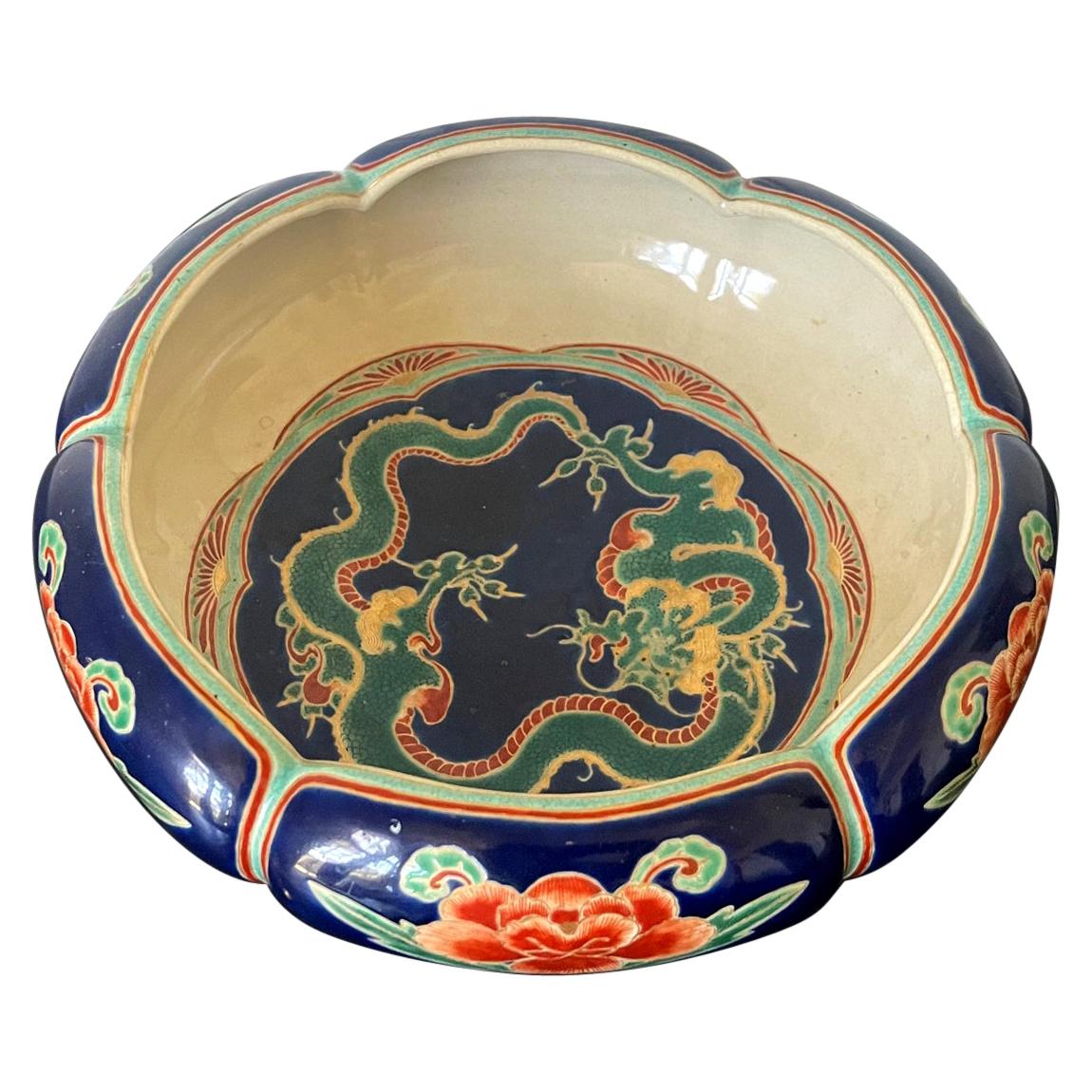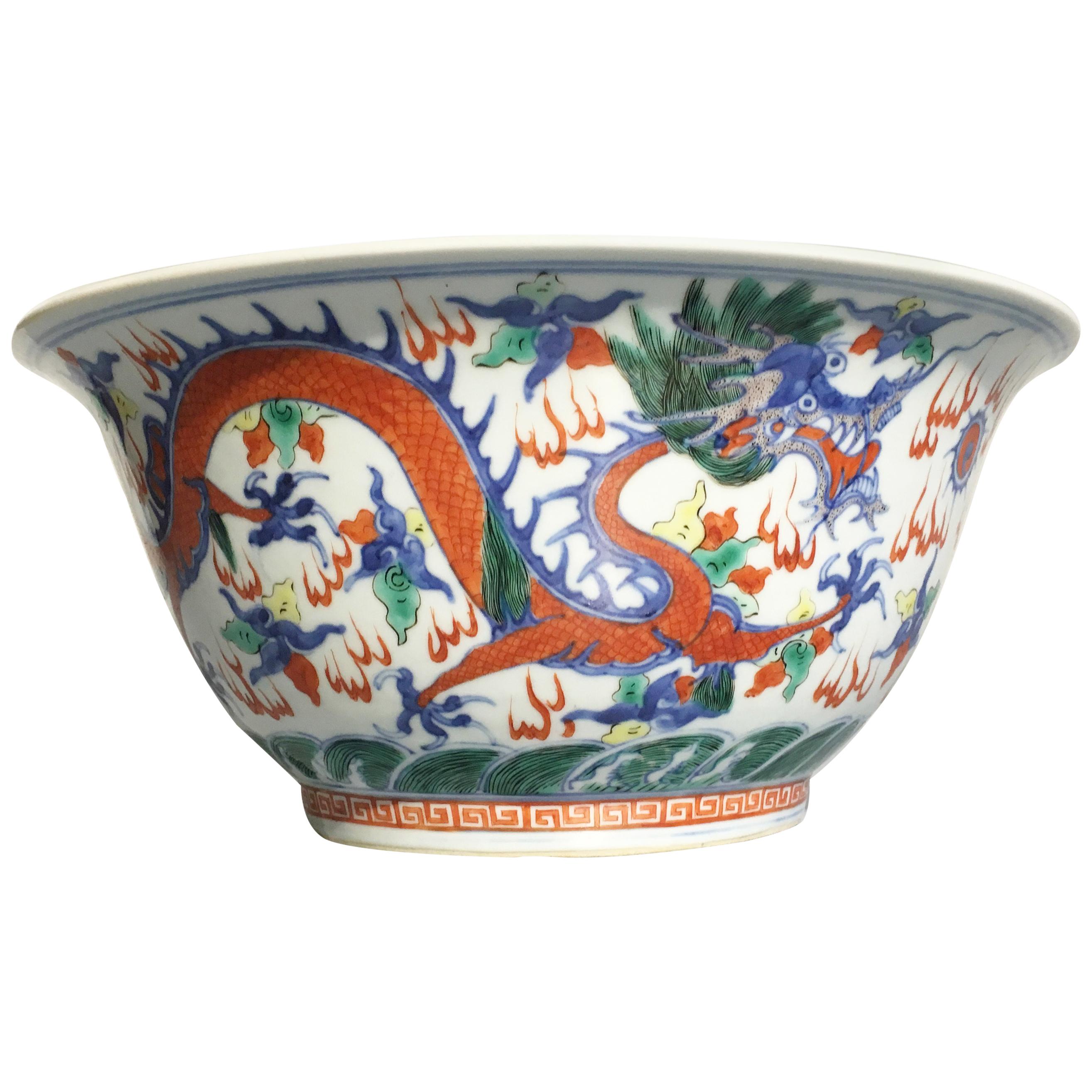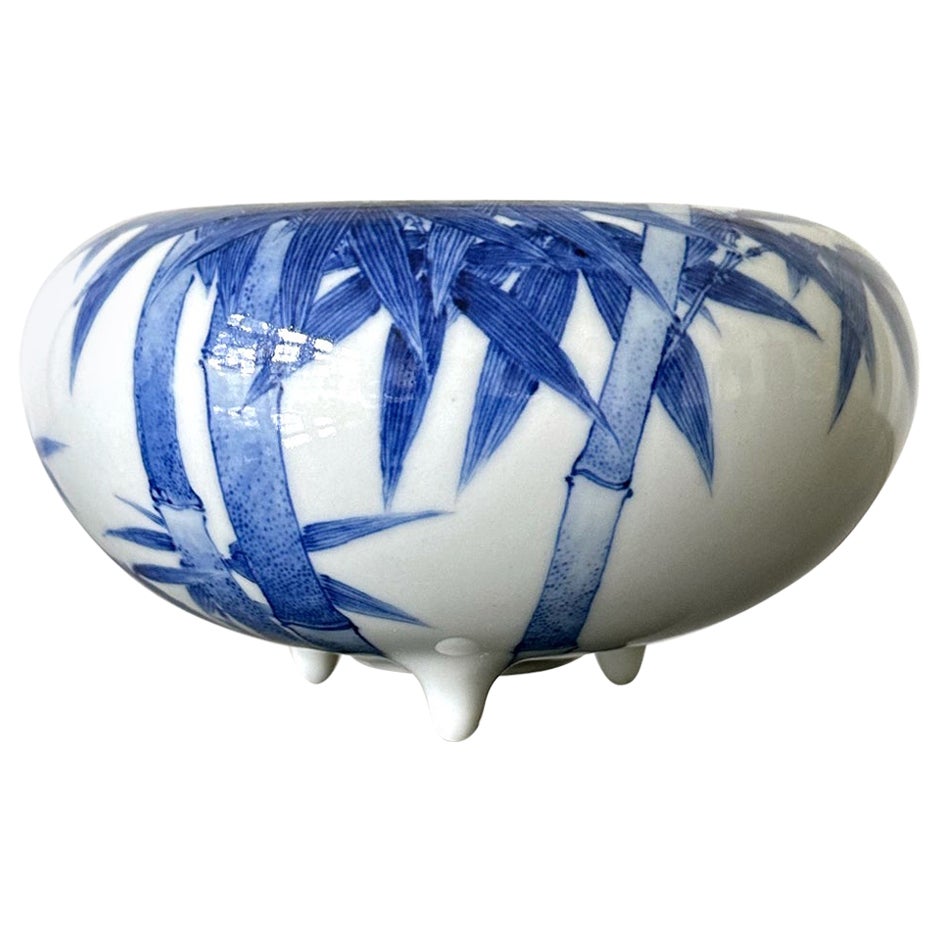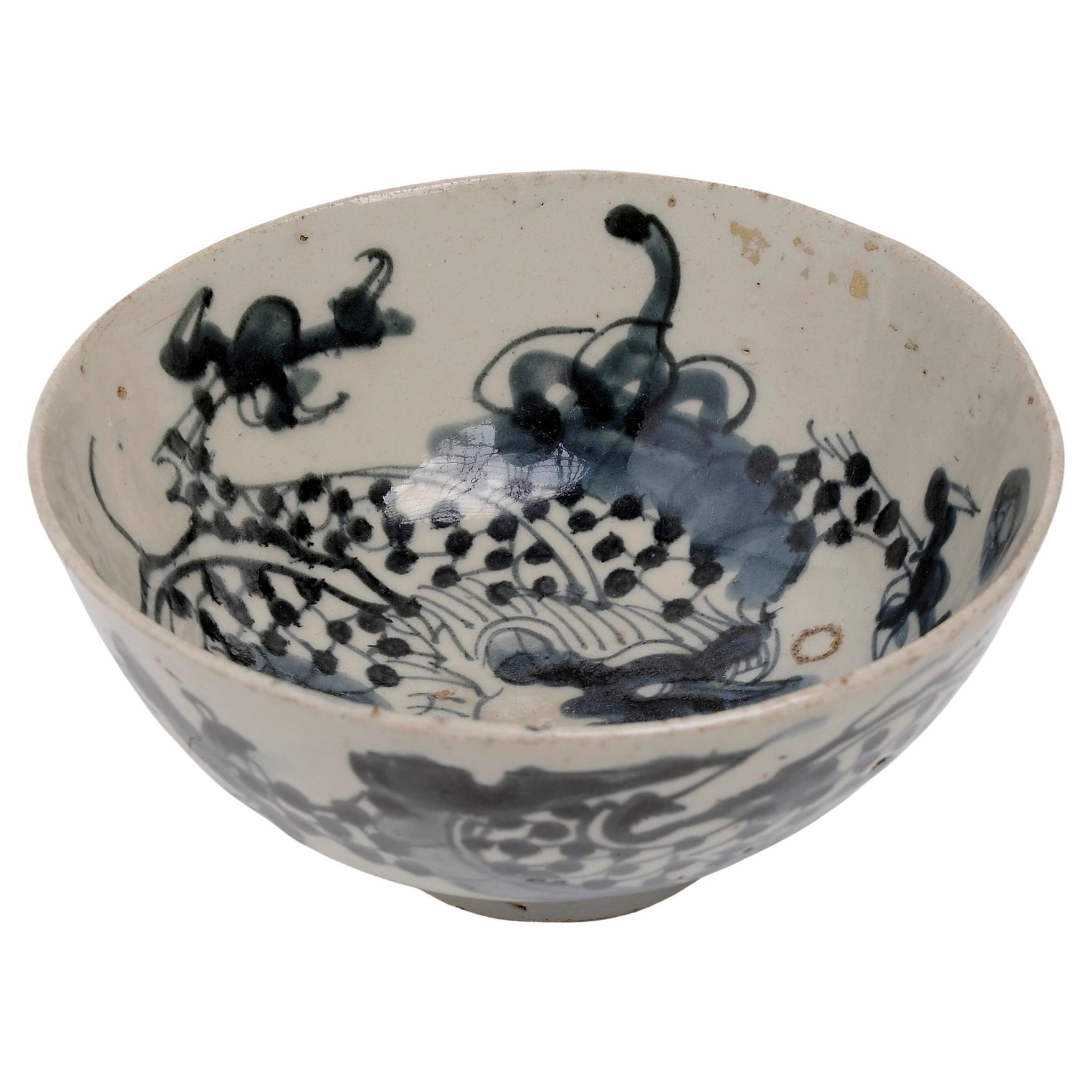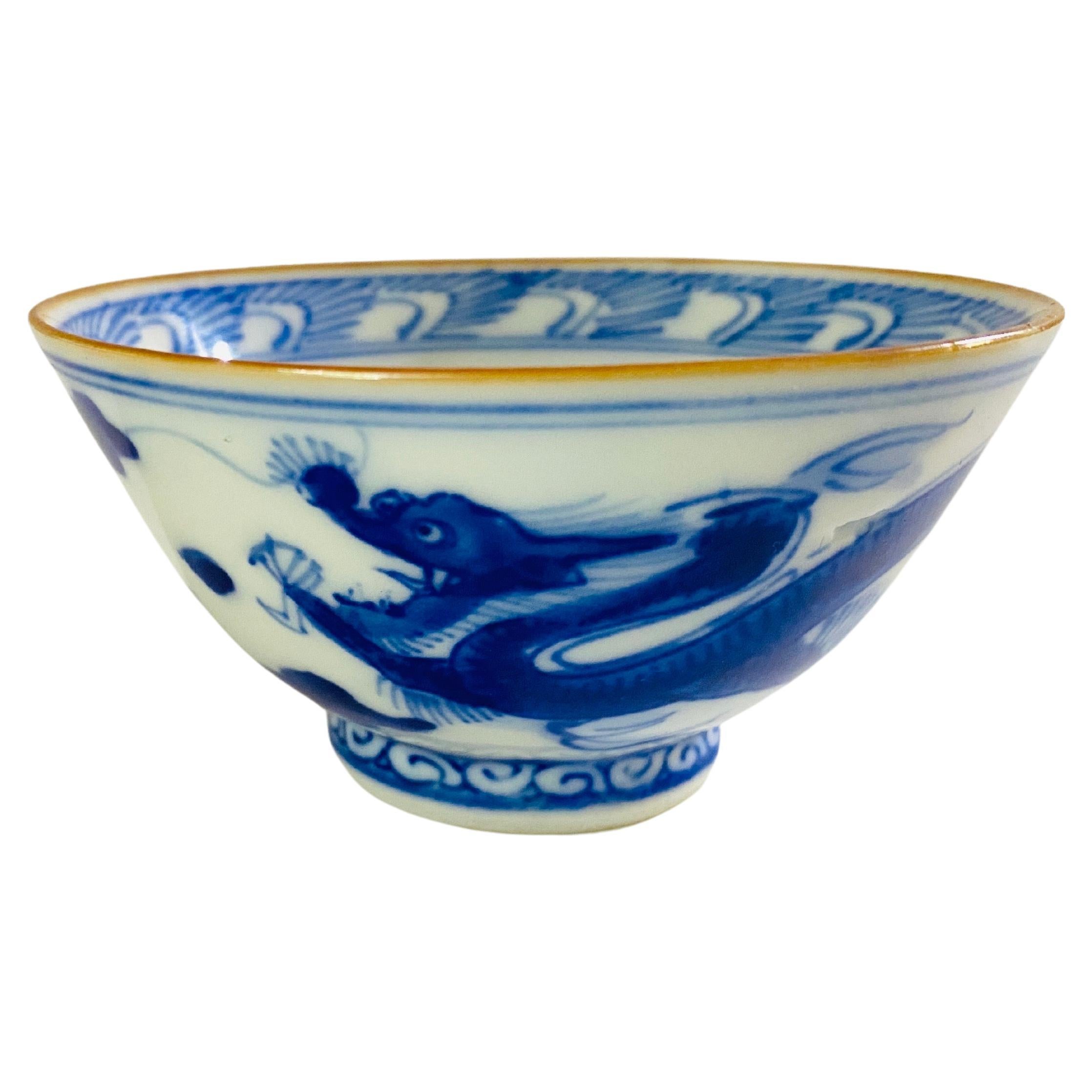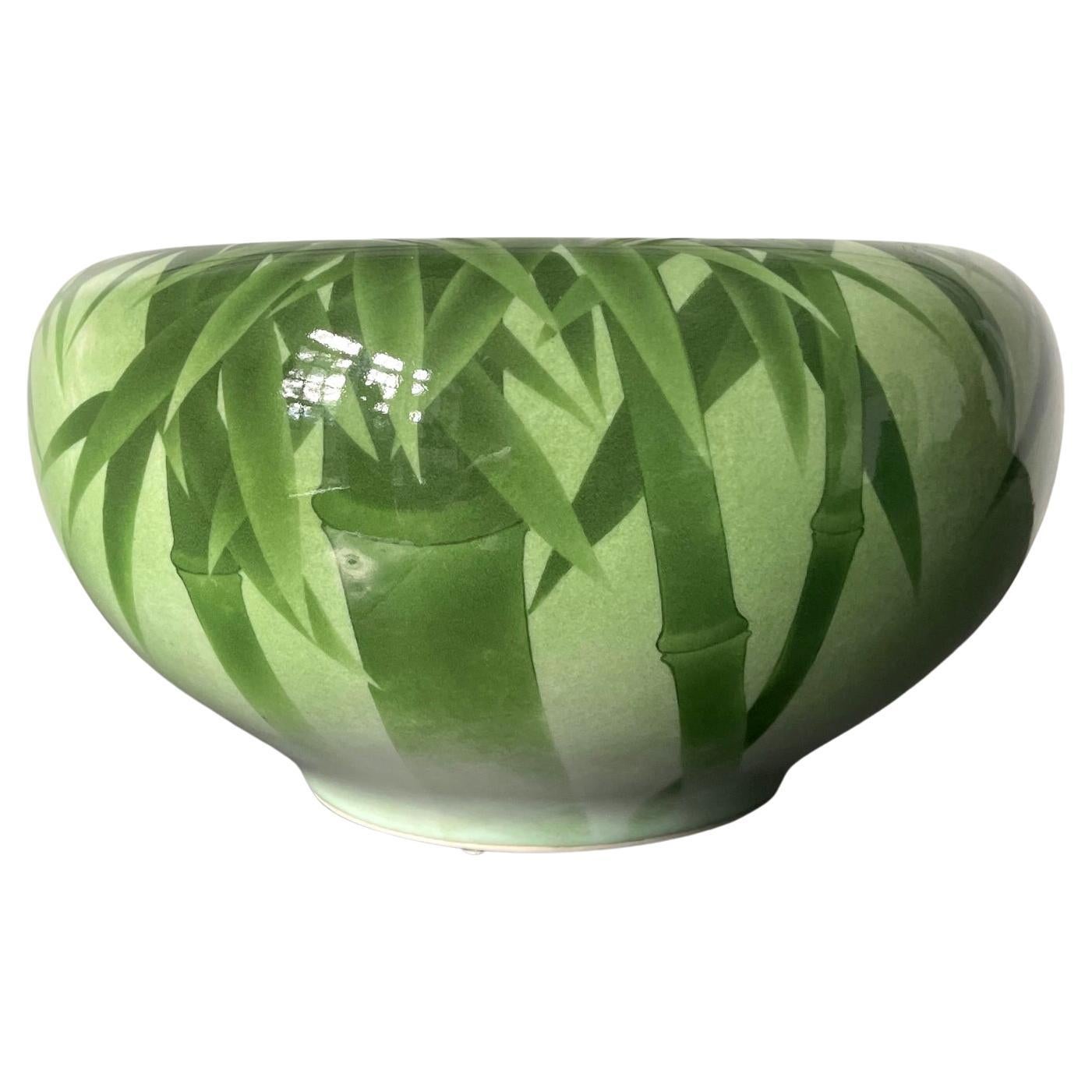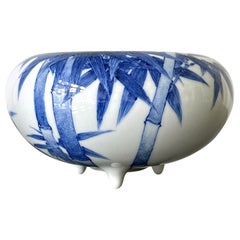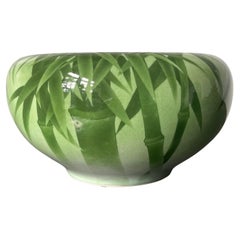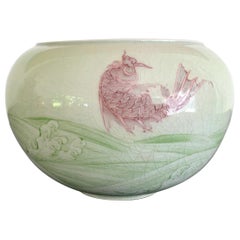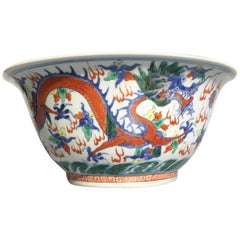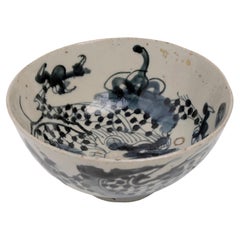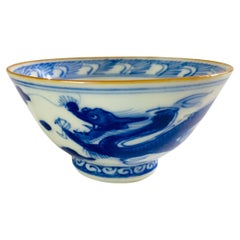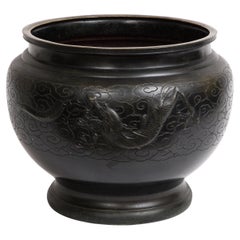Items Similar to Japanese Glazed and Caved Ceramic Dragon Bowl by Makuzu Kozan
Want more images or videos?
Request additional images or videos from the seller
1 of 21
Japanese Glazed and Caved Ceramic Dragon Bowl by Makuzu Kozan
$8,000
£6,116.43
€7,044.89
CA$11,210.45
A$12,515.42
CHF 6,557.89
MX$153,200.98
NOK 83,285.27
SEK 78,527.43
DKK 52,576.72
Shipping
Retrieving quote...The 1stDibs Promise:
Authenticity Guarantee,
Money-Back Guarantee,
24-Hour Cancellation
About the Item
A ceramic bowl by Japanese Imperial potter Makuzu Kozan (1842-1916) circa 1891 of late Meiji period. A very fine example of the artist's work that belongs to the middle period of his underglaze paint phase (started around 1887 until his death in 1916).
The bowl is in the shape of an Alms bowl, which monks traditionally carried to collect donations and foods, but it was probably used as a decorative and presentation piece. The surface of the koro was finely carved in a tight ocean wave pattern. On this background, two slithering dragons were painted in underglaze blue. The lively mythological creature was a frequent motif in Kozan's work. The rendition of the dragons was impressive in details: their undulating body with tiny scales circumvent the entire exterior. Scrolling clouds circles the upper and lower borders, completing the design in a wholesome manner.
The base is signed in underglaze blue "Makuzu Kiln Kozan Sei"
A vase with identical design motif of ocean wave carving, underglaze blue dragon as well as the signature was identified as made in 1891 and is illustrated on page 132 in the book "Makuzu Kozan I" by Dr. Yamamoto. Shown in the last picture of the listing.
Also known as Miyagawa Kozan (1842–1916), Makuzu Kozan was one of the most established and collected ceramist from Meiji Period. Born as Miyagawa Toranosuke, Kozan established his pottery studio in Yokohama around 1870s and later became one of the appointed artists to the Japanese Imperial household. His work was exhibited in many international fairs that the Meiji government participated at the turn of the century and won many grand prizes. Being one of the most creative ceramists, Kozan started experimenting with new chemical colors from the West in the format of his porcelain glaze around 1880s. New colors allowed him to create underglaze designs that appeared bright, smooth and glossy. He even invented his own receipt of cobalt blue to achieve a much brighter yet softer shade, as evident on this vase. To create landscape that is realistic and dimensional, more common in the western paintings, he was inspired by the native Japanese ink painting technique developed around 1900 by Yokoyama Taikan (1868-1958) and Hishidan Shunso (1874-1911) called Morotai (Hazy style) and used cobalt blue on the porcelain like ink on paper. The fuki-e technique was demanding and uniquely featured in the works of Kozan studio. Some of work from his studio also features fine low relief carving in combination with underglaze paint. This bowl is a superb example.
- Creator:Makuzu Kozan (Artist)
- Dimensions:Height: 4.25 in (10.8 cm)Diameter: 8.25 in (20.96 cm)
- Style:Meiji (Of the Period)
- Materials and Techniques:
- Place of Origin:
- Period:
- Date of Manufacture:1890s
- Condition:Wear consistent with age and use. Fine antique condition. Contact wear on the base and a minute point ding on the base ring only to the touch.
- Seller Location:Atlanta, GA
- Reference Number:1stDibs: LU945041602972
About the Seller
4.9
Platinum Seller
Premium sellers with a 4.7+ rating and 24-hour response times
Established in 2006
1stDibs seller since 2010
564 sales on 1stDibs
Typical response time: <1 hour
- ShippingRetrieving quote...Shipping from: Atlanta, GA
- Return Policy
Authenticity Guarantee
In the unlikely event there’s an issue with an item’s authenticity, contact us within 1 year for a full refund. DetailsMoney-Back Guarantee
If your item is not as described, is damaged in transit, or does not arrive, contact us within 7 days for a full refund. Details24-Hour Cancellation
You have a 24-hour grace period in which to reconsider your purchase, with no questions asked.Vetted Professional Sellers
Our world-class sellers must adhere to strict standards for service and quality, maintaining the integrity of our listings.Price-Match Guarantee
If you find that a seller listed the same item for a lower price elsewhere, we’ll match it.Trusted Global Delivery
Our best-in-class carrier network provides specialized shipping options worldwide, including custom delivery.More From This Seller
View AllRare Japanese Ceramic Glazed Bowl Makuzu Kozan Meiji Period
By Makuzu Kozan
Located in Atlanta, GA
On offer is a rare ceramic bowl with overglazed design by the famed Japanese ceramic artist Makuzu Kozan (1842-1916), circa 1906-1916. The bowl is rather unusual from the potter's repertoire with its unique glaze colors and decoration, and it likely belonged to a small series that Kozan made in and after 1906. A bowl of similar glaze and nearly identical dragon motif was recorded as a diplomatic present to the British royalty Arthur Connaught (1883-1932) when he represented King Gorge V in Japan in 1906. Other pieces, such as this bowl, were likely made with similar materials and designs afterwards.
Essentially round in form, the bowl has a generous volume with six harmonious lobes. The bottom of the interior showcases a coiled dragon in red, green and gold slithering on a cobalt blue background. The roundel shares an echoing lobed perimeter, which is further outlined by red and turquois bands and rising sun design. The exterior of the bowl features six stylized Japanese camellias...
Category
Antique Early 1900s Japanese Japonisme Ceramics
Materials
Ceramic
Japanese Glazed Ceramic Bowl by Makuzu Kozan
By Makuzu Kozan
Located in Atlanta, GA
Tri-pod ceramic bowl likely used as an incense burner (koro) by Japanese Imperial potter Makuzu Kozan (1842-1916) circa late Meiji period. The signature indicates that it was produce...
Category
Antique 1880s Japanese Meiji Ceramics
Materials
Ceramic
Japanese Ceramic Centerpiece Bowl Makuzu Kozan Meiji Period
By Makuzu Kozan
Located in Atlanta, GA
A beautiful ceramic vessel in the form of Bo, the so-called monk's alms bowl from the studio of Japanese Potter Makuzu Kozan, also known as Miyagawa Kozan (1842–1916), one of the most established and collected ceramist from Meiji Period. Born as Miyagawa Toranosuke, Kozan established his pottery studio in Yokohama circa 1870s and later became one of the appointed artists to the Japanese Imperial household. His work was exhibited in many international fairs that the Meiji government participated at the turn of the century and won many grand prizes.
Of a relatively large size, this piece was made as a decorative center piece for display. It was brilliantly decorated with underglaze paint of a green-on-green bamboo motif, using the novel technique developed by Kozan called Fuki-e (the blow painting). As a result, the bamboos appear took on a three-dimensional quality as if appearing in a mist. Known as one of the most creative ceramists, circa 1887, Kozan started experimenting with new chemical colors from the West in the format of his porcelain glaze. New colors allowed him to create underglaze design that appeared bright, smooth and glossy. To create design that is realistic and dimensional, more common in the western paintings, he was inspired by the native Japanese ink painting technique developed around 1900 by Yokoyama Taikan...
Category
Antique Early 1900s Japanese Japonisme Ceramics
Materials
Ceramic
Rare Porcelain Bowl with Plique-a-Jour Design by Makuzu Kozan
By Makuzu Kozan
Located in Atlanta, GA
An extremely fine and delicate porcelain bowl from the studio of Japanese Potter Makuzu Kozan, also known as Miyagawa Kozan (1842–1916), one of the most established and collected cer...
Category
Antique Early 1900s Japanese Japonisme Ceramics
Materials
Porcelain
Japanese Glazed Kyo-yaki Tea Bowl Nin'ami Dohachi Edo Period
Located in Atlanta, GA
A Japanese chawan (tea bowl) of Kyo-yaki (Kyoto ware) attributed to Nin'ami Dōhachi, also known as Takahashi Dōhachi (1783–1855). Potted sensitively wi...
Category
Antique 19th Century Japanese Edo Decorative Bowls
Materials
Ceramic
Japanese Glazed Mino Tea Bowl Chawan Showa Period Ex-Musuem
Located in Atlanta, GA
A Japanese glazed ceramic tea bowl (chawan) in Gohon style likely made in Showa period of 20th century. Supported by a short foot ring with a notch, the bowl was made from coarse cla...
Category
Early 20th Century Japanese Meiji Ceramics
Materials
Ceramic
You May Also Like
Large Chinese Qing Dynasty Wucai Porcelain Dragon Bowl, 19th Century
Located in Austin, TX
A large Chinese Qing dynasty porcelain wucai (five color) glazed bowl painted in underglaze blue and overglaze red, green, and yellow upon a pure white ground, and featuring a design...
Category
Antique Late 19th Century Chinese Qing Ceramics
Materials
Porcelain
Ancient Japanese Bowl with Dragon
Located in Alessandria, Piemonte
O/1393 - This bowl is more antique tha I wrote. This is one piece from a large collection of ancient pottery, gathered 35 years ago and never exhibited to the public.
I woud like to sell...
Category
Early 20th Century Japanese Other Ceramics
Materials
Ceramic
Vietnamese Bowl with Dragon and Clouds Pattern Decor 1900 Vietnam
Located in Auribeau sur Siagne, FR
Decorative Bowl. withblue Dragon and Clouds, circa 1900.
it has been made in vietnam.
Category
Antique Early 1900s Vietnamese Chinese Export Serving Bowls
Materials
Majolica
$330 Sale Price
20% Off
A Japanese Meiji Period Patinated Bronze Centerpiece/Bowl w/ Dragon in Relief
Located in New York, NY
A Fantastic and large Japanese Meiji Period Patinated Bronze Centerpiece/Bowl/jar denier with Dragon in Relief. This captivating and exquisite, hand-crafted, patinated bronze centerpiece serves as a remarkable focal point, adorned with marvelously hand-chassed and hand-chiseled dragons in relief, gracefully emerging and disappearing behind artfully stylized scrolling etched clouds. The centerpiece boasts a substantial and graceful curved base, complemented by a striking peaked and square-edged lip atop the vessel.
The significance behind the depiction of the three-clawed dragons stems from the Japanese belief that Eastern dragons originated within their native land. According to their folklore, as these majestic creatures ventured away from Japan, they acquired additional toes. The Japanese Sky dragon...
Category
Antique 1890s Japanese Meiji Metalwork
Materials
Bronze
Vintage Chinese Porcelain Hand Painted Lucky Dragon Bowl
Located in North Hollywood, CA
Vintage Chinese porcelain hand painted dragon bowl, green and red dragon ware.
Collectible hand painted Chinese porcelain lucky Dragon b...
Category
Mid-20th Century Chinese Chinese Export Decorative Bowls
Materials
Porcelain
Antique Japanese Arita Porcelain Bowl Japan Top Quality, ca 1670-1690
Located in Amsterdam, Noord Holland
A lovely antique bowl from Arita, Japan. The outside wall with an ongoing landscape scene and the inside also with a nice landscape scene in a circle.
Additional information:
Materi...
Category
Antique 17th Century Japanese Decorative Bowls
Materials
Porcelain
$1,699 Sale Price
20% Off
